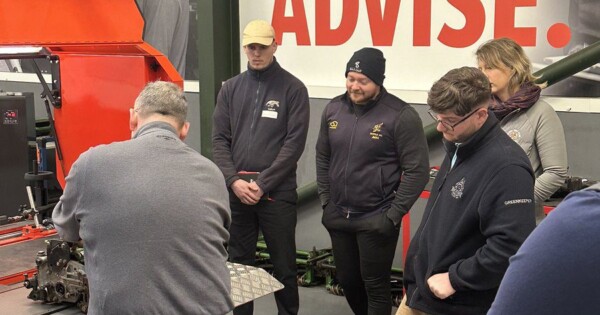Stress Time: Soil Test To Focus On The Weakest Link
Summer stress for natural grass surfaces is on. Its known as the “90 Days of Hell” in the transition zone and cool season climates. Some of our clients are reporting stress.. and social media abounds with stressed grass and stressed turfgrass managers.
Currently for clients that are seeing any kind of stress or lack of growth, we are sharing 1 simple message to our clients: Soil Test Immediately.
WHY?
“The availability of the most abundant nutrient in the soil is only as good as the availability of the least abundant nutrient in the soil.”
Soil testing is something that seems so simple and so trivial. Previously we have done it and/or recommended it 1-2 times per year, but with no plan on why or when. Then 1 day it registered with me completely when a turfgrass scientist and inventor made a very simple yet bold statement: “I can diagnose any plant growth or healthy problem from a soil test”.
My immediate reaction was to press him. “Wait. What? What about the tissue test? What about a pathogen test? What about…” NO, it can NOT be that simple!
But he can. And he does. A soil test can diagnose a wide range of things from something as simple as salt stress all the way to disease potential. A soil test is a true diagnosis tool.
HOW?
This “law” or “principle” of the minimum was formulated by Carl Sprengel, a German botanist, as early as 1828. It became more well know when German biochemist and professor Justus von Liebig publicized and studied it more widely starting around 1840. Liebig’s work became the foundation for laboratory oriented teaching as its known today and earned him consideration as the “Father of the fertilizer industry”. Simply put, Liebig’s Law of The Minimum summarizes that plant growth and health is not controlled by the total amount of nutrients available in the soil… But instead plant growth and health is control by the scarcest of the nutrients available in the soil. Liebig’s Law many times is summarized with the icon of a leaking bucket. The factor of which is the weakest or slowest on the bucket is where the bucket leaks. It is also described using a chain example- the weakest link in the chain is where the chain will break.
Using Liebig’s Law for turfgrass management… turfgrass growth isn’t driven by maintaining upper levels of nutrients, its driven by building a foundation of all nutrients. Grass plants are prone to disease when lacking in certain nutrients as much as having excess in other nutrients. With the stress period of summer arriving now, a soil test from March or isn’t telling us what we need to know NOW. Soil holding can change quickly, especially in times of frequent irrigation during drought (being experienced in part of the country right now) and in times of too much rainfall (also experienced by part of the country over the last 2 months). Thus planning forward, for this season and forever more, our simple yet important recommendation of getting a soil test in mid-June/ early July will be concrete to help preparation for stress and in diagnose turfgrass stress or lack of growth.
Seems so simple and outdated from 1828, but a basic principle such as Liebig’s Law will certainly stand the test of time!


